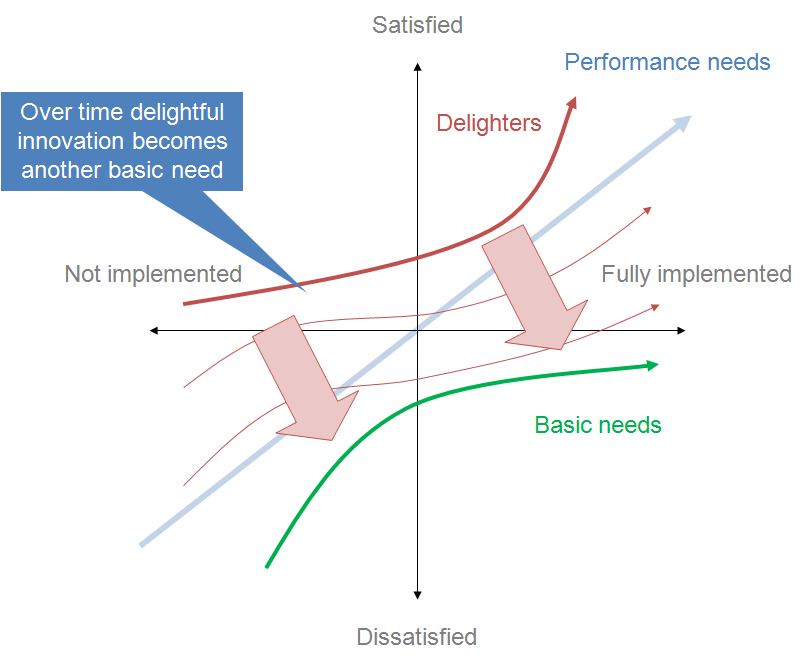Tenho um tio com mais de 90 anos que é padre.
Há anos perguntei-lhe como é que a ICAR iria resolver o problema da falta de vocações sacerdotais. Eu a pensar que o tinha entalado recebi uma resposta que me desconsertou:
- O Espírito Santo providenciará uma resposta!
E quantos mais anos passam mais eu acho a resposta cheia de sabedoria.
Reconheço que em certa medida é o que eu escrevo aqui quando falo da tolice que é acreditar que os modelos de funcionamento da economia, que hoje nos são familiares, têm centenas de anos, mas parecem ser eternos. Mentira!
Talvez por isso, em inglês se diga que:
- Trends are for suckers!
Muita gente faz previsões assumindo que uma variável muda e que todas as outras se mantêm constantes. Por exemplo, assumir que vão faltar empregos por causa da ascensão das máquinas e considerar como constantes aquilo que é variável:
- demografia; e
- Mongo com a sua exigência de mais diversidade, de mais customização.
E esquecer que o emprego, algo que nos parece tão natural como a chuva ou a noite e o dia, é uma criação recente. E como sublinha Nassim Taleb com o efeito Lindy, é mais fácil que o livro em papel ainda exista daqui a 100 anos do que um iPad. Se a humanidade prosperou durante milhares de anos sem empregos e sem escola pública poderá prosperar outros tantos depois dessas realidades serem abandonadas.
Escrevo isto depois da leitura de "
A World With Fewer Babies Spells Economic Trouble". Sigo aqui no blogue há muitos anos uma postura do contra. Não creio que seja uma catástrofe, um futuro onde os humanos têm menos filhos, se calhar investem mais nesses filhos, se calhar esses filhos serão vistos pela sociedade em geral como algo escasso e, por isso, de maior valor. Escrevi aqui algures que um dia seríamos (os nossos descendentes) todos tratados como Figos.
Catástrofe será caminhar para um mundo com uma população mais envelhecida, com menos gente nova, e não fazer nenhuma alteração no funcionamento das sociedades por causa de direitos adquiridos.
Este trecho:
"4. What happens when a country’s population stops growing?
Its economy can still expand, but the pace over the long run would be limited to the speed at which productivity -- output per hour worked -- is rising. Since the 2007-2009 recession, productivity gains have been relatively meager, making low fertility rates an added problem. If fewer people work, there’s less income to go around. Fewer workers also mean less tax revenue for retirement and health-care programs. And that means governments might have to cut benefits, raise taxes or borrow more, pitting the old and young against each other."
Faz-me lembrar uma reunião de condomínio recente. Um casal de idade, ambos reformados, protestavam contra o valor mensal a pagar pelo condomínio. A empresa que gere o condomínio explicou cada um dos items do orçamento, chamou a atenção para as obras que iriam ser feitas e as propostas que tinham recebido. Então, o casal propôs uma medida para reduzir os custos do condomínio, cortar a luz na garagem do prédio.
O que fará o Espírito Santo neste mundo secular?
Há uma citação que aprendi a valorizar: "nature evolves away from constraints, not toward goals"
Uns hão-de querer manter direitos adquiridos, outros acharão abominável fazer como fizeram este mês os japoneses e marcar a idade da reforma para os 70 anos, no fim algo há-de levar-nos para um equilíbrio.
Lembro-me de um comentador na oposição no tempo da troika dizer que querer ter défice zero, cortar cerca de 4,5 mil milhões de euros, era impossível. Agora, apoiante da geringonça, acha normal apontar a défice zero. Se antes achava o investimento público intocável, agora nem fala dele.
Como indivíduos, somos um resultado fantástico de milhares de milhões de anos de evolução, adaptamos-nos a tudo, com maior ou menor dor. Quando a necessidade se impuser acabaremos por chegar a uma alternativa sustentável.


















%2006.21.jpeg)












